Hand & Vocal Gestures
Slowing
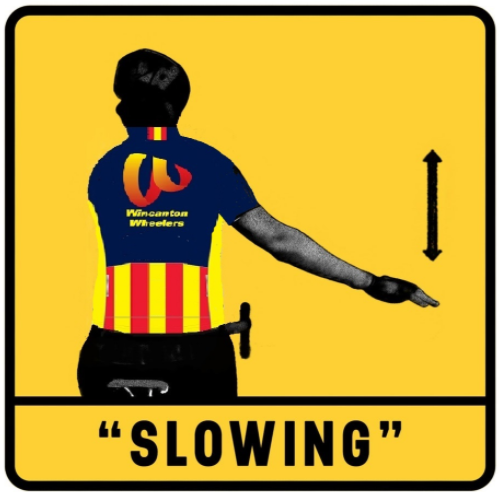
With your arm outstretched, palm-down, and slightly behind you so cyclists behind you get a clear view of your hand, move your hand up and down at the wrist to indicate that you’re about to slow. Use this indication when you’re confident that you’re going to be pulling the brakes in order to significantly slow your speed. Optional call: “Slowing!” In addition to the signal, and if braking is more urgent and you haven’t got time to indicate safely, call out “Slowing!” loudly and sharply. This will give riders an additional stimulus to react to, apart from your rear wheel suddenly rushing towards them.
Stopping
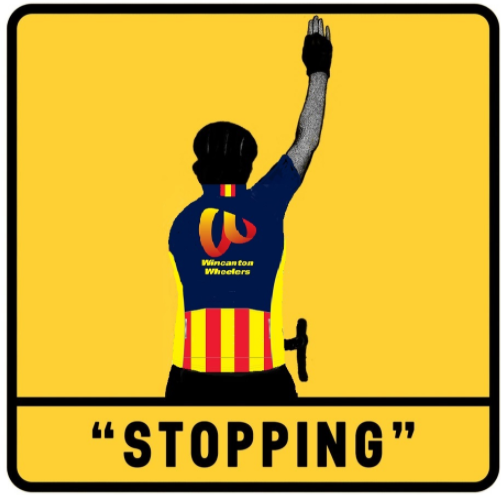
Raise a hand straight above your head to indicate that you expect to stop. This indication supersedes the indication and call to slow. Optional call: “Stopping!” While optional, the call of “Stopping!” can be absolutely necessary if the nature of the stop is sudden or sharp, and if you therefore haven’t got the time to make the signal. This can make the difference between a safe stop and a potentially very dangerous situation, so ensure the call is loud, sharp and urgently made with as much notice as possible.
Indicating
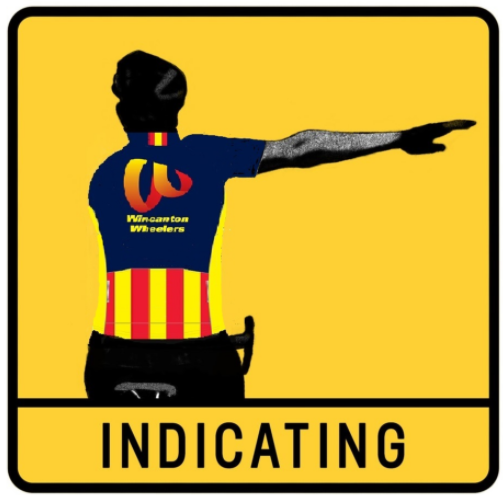
An essential signal for all road users. Outstretch your arm straight out to the side of you to indicate your intended turn. Ensure you make this indication before you edge out to the middle of the road in the case of a right turn in the UK, so other road users have plenty of notice of your intentions. Always have a quick look behind you to make sure those other road users have seen and reacted to your indication. If you’re at the head of a large group, it can be helpful to raise your hand to just above shoulder height and point in the direction of the upcoming turn.
Holes, Hazards & Potholes
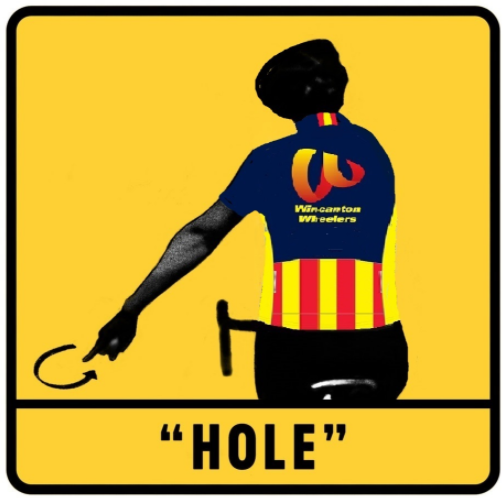
If you are approaching a hazard in the road, for example a pothole, manhole cover or drain cover, outstretch your arm on the side that the upcoming hazard will pass your bike and point to the floor. This will sometimes be accompanied by a circling motion – if there’s time. Optional call: “Hole!” For deep and sharp holes in the road, a clear and loud call of “hole” or “holes” will help notify your fellow cyclists of the severity of the upcoming obstacle. However, this is not to be overused – on UK roads, if we all shouted “hole!” every time the road surface was less than perfect, we’d probably never stop.
Gravel
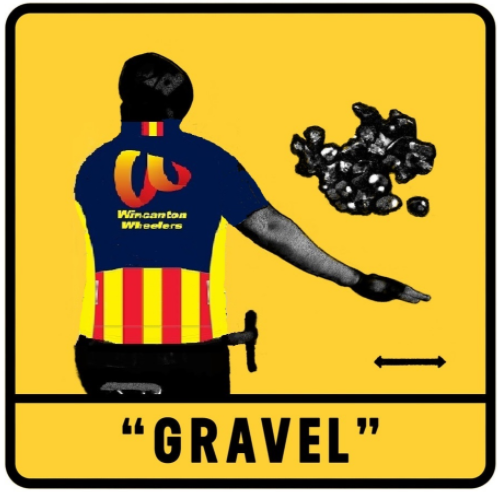
For specific hazards where the effect will be a potentially slippery surface, take your outstretched hand, palm down and wave at the floor. This can also be used for a broken or unconsolidated road surface. Optional call: “Gravel! / Loose! / Ice! / etc.” Calling out the nature of the hazard loudly can add extra important information to your fellow cyclists. Ensure you use clear, single word calls to avoid confusion.
Cattle Grids, Railway Tracks & Speed Bumps
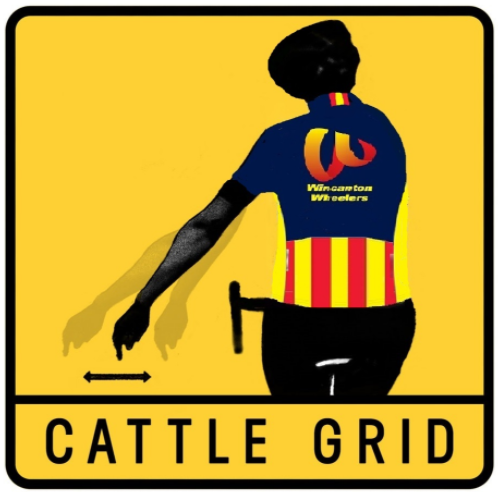
For hazards running across the road like rail tracks, cattle grids and speed bumps, take your hand behind you and draw a line horizontally back-and-forth across your back. If a hazard of this type is even close to being in line with the direction you’re riding, such as tram lines, trace that line clearly in the direction it runs to point it out to your fellow cyclists.
Come Through
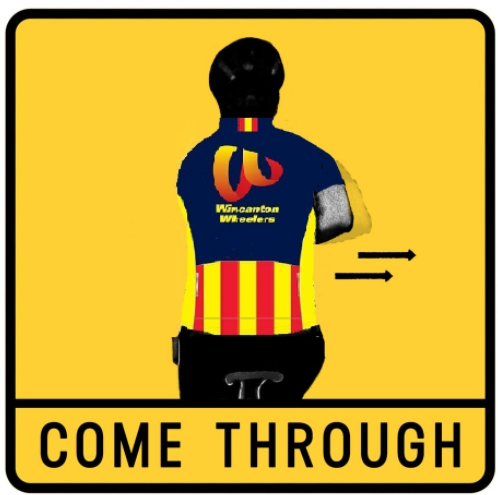
We’ve all been there, where we’ve been doing far more than our fair share of the work at the front of the group and have seemingly been left out to dry. While riding, flick your elbow out on the side you want the wheelsucker(s) to come through. Emphasise this by safely moving out slightly to give them extra room to come by, and ease off the pedals very slightly; they’ll get the message.
Hazard
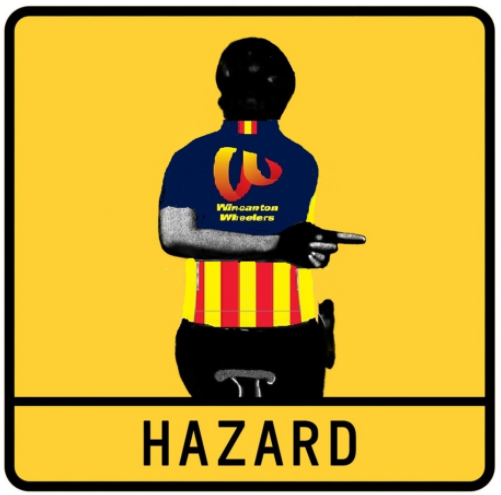
As you approach a physical oncoming hazard, take the arm on the side of the hazard behind you and point across your back in the direction the cyclist behind you will need to move in order to avoid it.In the UK, the hazard usually approaches on the left in the form of a parked car or similar, so the left arm is normally used
Thanks & Acknowledgement
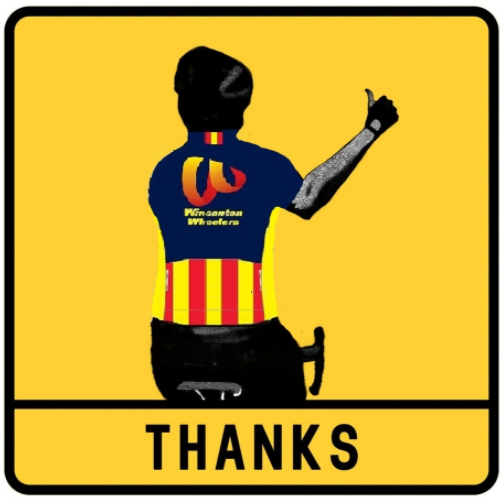
It’s so easy to forget to do this, but it makes the world of difference for road-user relations. If an oncoming vehicle has let you and / or your group have space to make a turn or have access to a narrow stretch of road first, acknowledge them with a raised hand of thanks. Making this sign obvious – for example with an additional smile or a raised thumb – can help ‘humanise’ you on the road, and conveys genuine appreciation for the actions of the other road user.
It’s also a fine road cycling tradition, especially in the UK, that road cyclists acknowledge each other as they pass by. A nod of the head and smile, or a hand raised off the ‘bar, will do the trick for oncoming riders, or just say “hello” if passing a cyclist on the same side of the road. Be nice out there!